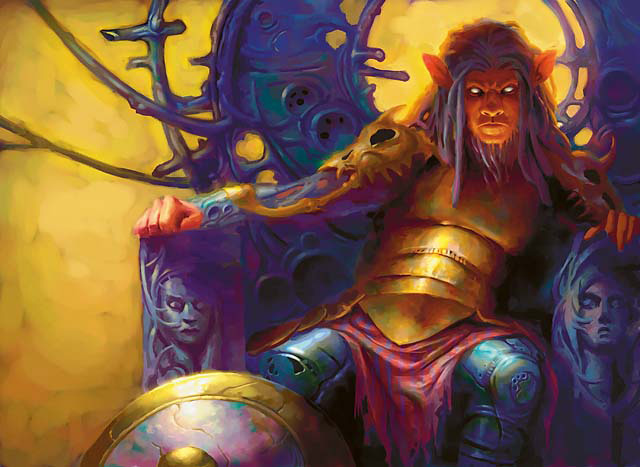Epic Preparations
Good morning, EDHREC! I’m Bernardo Melibeu and this is The Epic Experiment, a series where we throw all common sense aside and experiment with some unusual cards, effectively changing how we normally build our deck. Is it going to work? Who knows?! We’re making science here. When you’re an Izzet mage, blowing things up in front of your own face is half the fun.
In this article were going to examine one very combo oriented bird Teshar, Ancestor's ApostleTeshar, Ancestor's Apostle.
First, let's take a look at his abilities:

Flying
Whenever you cast a historic spell, return target creature card with converted mana cost 3 or less from your graveyard to the battlefield.
Observation 1:
There're two clear directions that we need to build our deck, historic cards and <3 mana costed creatures.
Observation 2:
Out of the historic types, only artifacts and legendaries have the sheer number of cards to be able to build a deck around.
Observation 3:
Both of those previous card types that trigger his ability can also be reanimated by the ability itself.
Observation 4:
His ability is more value based and, because of that, it excels at the attrition game.
The Old Formula
With that in mind let's head to Teshar's EDHREC page and see how he's usually built:

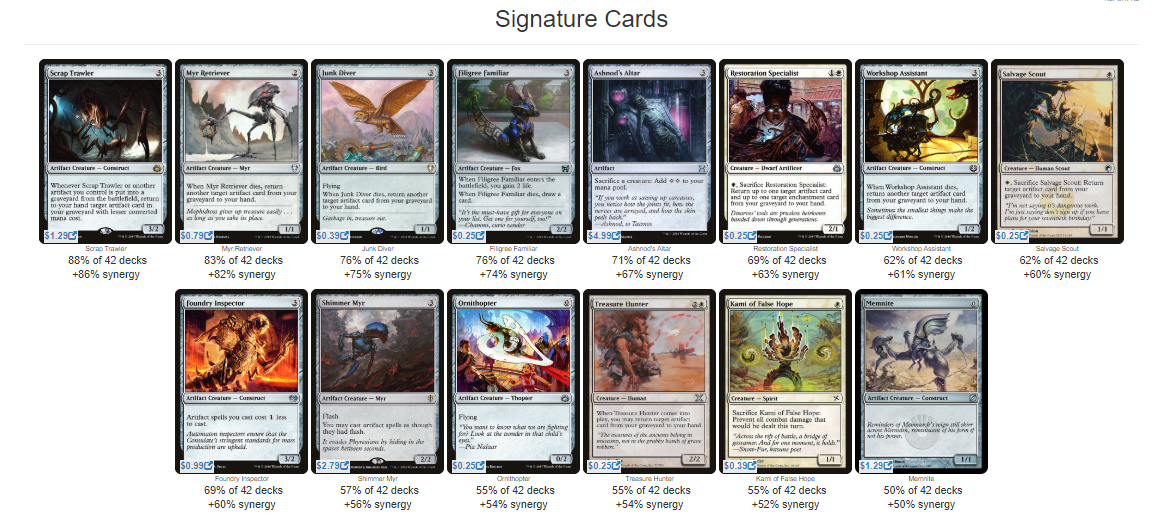
From what we can see, it's obvious that the go-to route is an artifact route, abusing the sheer amount of value gained from sacrificing cards like Myr RetrieverMyr Retriever and Scrap TrawlerScrap Trawler to Ashnod's AltarAshnod's Altar. With that kind of engine going, it's very easy to make an infinite loop and win the game.
The Epic Ingredients
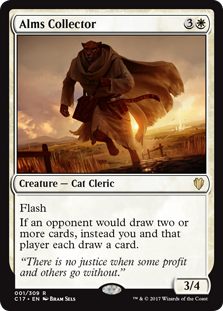


Building a mono white deck means that we'll suffering from the lack of good ways to develop, both in card draw and mana, throughout the game. To make matters worse, our opponents (probably) don't have our color restrictions and they're doing unfair things, such as tutoring for combo pieces or ramping into an Eldrazi titan or even chaining multiple spells a turn.
Luckily for us, we are in the best color to stop all those unfair things from happening! The way we do it is by using cards like Vryn WingmareVryn Wingmare, Eidolon of RhetoricEidolon of Rhetoric and Aven MindcensorAven Mindcensor to deny and tax our opponents resources and make them play at our pace.
So there we have it! We play a deck full of creatures that provide both clock and disruption! But where does Teshar fits in all of this? It's simple. An opponent destroyed our disruptive creature? Play a historic spell and get that creature back for free. Did we lock the board so much that only one spell can be played per turn? Again, play a historic spell and get another for free. How about getting back an utility creature such as Capashen UnicornCapashen Unicorn?
Our creature suite attacks on many angles. We can stop the table from casting multiple spells a turn (Eidolon of RhetoricEidolon of Rhetoric, Ethersworn CanonistEthersworn Canonist), tax every spell (Thalia, Guardian of ThrabenThalia, Guardian of Thraben, Vryn WingmareVryn Wingmare), disrupt their tempo by making things enter the battlefield tapped (Thalia, Heretic CatharThalia, Heretic Cathar, Imposing SovereignImposing Sovereign), and even prevent card draw(Alms CollectorAlms Collector, Spirit of the LabyrinthSpirit of the Labyrinth).
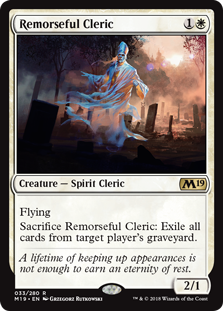

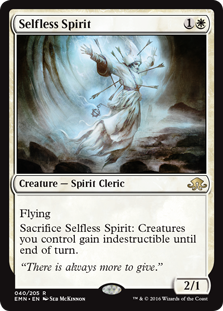
There're also some creatures that generate value by recurring them, Selfless SpiritSelfless Spirit protects against board wipes, Remorseful ClericRemorseful Cleric can help stop graveyard shenanigans, and Capashen UnicornCapashen Unicorn and Bounty AgentBounty Agent are repeatable removal.
We're also packing some beaters. While they're fewer in number, their role is actually very important, since we need to close the game. Benalish MarshalBenalish Marshal and Soltari ChampionSoltari Champion help pump the team, and Brimaz, King of OreskosBrimaz, King of Oreskos and Heliod, God of the SunHeliod, God of the Sun can snowball pretty quickly.
Given the nature of Teshar's ability, we need to have a critical amount of historic spells. Because of that, we're also carrying a light artifact stax package. We've got a couple of sphere effects, with Damping SphereDamping Sphere and Thorn of AmethystThorn of Amethyst, a permanent tapper. with Orb of DreamsOrb of Dreams and the ever tilting Winter OrbWinter Orb.
The Mixture
Teshar Hatebears
View on Archidekt- 1 [Commander]Teshar, Ancestor's Apostle[/Commander][Commander]Teshar, Ancestor's Apostle[/Commander]
Creature (41)
- 1 * Hope of Ghirapur* Hope of Ghirapur
- 1 * Isamaru, Hound of Konda* Isamaru, Hound of Konda
- 1 * Kami of False Hope* Kami of False Hope
- 1 * Mother of Runes* Mother of Runes
- 1 * Skymarcher Aspirant* Skymarcher Aspirant
- 1 * Thraben inspector* Thraben inspector
- 1 * Phyrexian Revoker* Phyrexian Revoker
- 1 * Aegis of the Gods* Aegis of the Gods
- 1 * Bounty Agent* Bounty Agent
- 1 * Capashen Unicorn* Capashen Unicorn
- 1 * Ethersworn Canonist* Ethersworn Canonist
- 1 * Imposing Sovereign* Imposing Sovereign
- 1 * Knight of the White Orchid* Knight of the White Orchid
- 1 * Leonin Arbiter* Leonin Arbiter
- 1 * Remorseful Cleric* Remorseful Cleric
- 1 * Selfless Spirit* Selfless Spirit
- 1 * Spirit of the Labyrinth* Spirit of the Labyrinth
- 1 * Thalia, Guardian of Thraben* Thalia, Guardian of Thraben
- 1 * Aven Mindcensor* Aven Mindcensor
- 1 * Benalish Marshal* Benalish Marshal
- 1 * Brimaz, King of Oreskos* Brimaz, King of Oreskos
- 1 * Bygone Bishop* Bygone Bishop
- 1 * Eidolon of Rhetoric* Eidolon of Rhetoric
- 1 * Fairgrounds Warden* Fairgrounds Warden
- 1 * Fiend Hunter* Fiend Hunter
- 1 * Glowrider* Glowrider
- 1 * Hushwing Gryff* Hushwing Gryff
- 1 * Mentor of the Meek* Mentor of the Meek
- 1 * Mirror Entity* Mirror Entity
- 1 * Recruiter of the Guard* Recruiter of the Guard
- 1 * Soltari Champion* Soltari Champion
- 1 * Thalia, Heretic Cathar* Thalia, Heretic Cathar
- 1 * Vryn Wingmare* Vryn Wingmare
- 1 * Alms Collector* Alms Collector
- 1 * Heliod, God of the Sun* Heliod, God of the Sun
- 1 * Hokori, Dust Drinker* Hokori, Dust Drinker
- 1 * Linvala, Keeper of Silence* Linvala, Keeper of Silence
- 1 * Lodestone Golem* Lodestone Golem
- 1 * Reveillark* Reveillark
- 1 * Sun Titan* Sun Titan
- 1 * Elesh Norn, Grand Cenobite* Elesh Norn, Grand Cenobite
Artifact (18)
- 1 * Everflowing Chalice* Everflowing Chalice
- 1 * Skullclamp* Skullclamp
- 1 * Sol Ring* Sol Ring
- 1 * Dispeller's Capsule* Dispeller's Capsule
- 1 * Coldsteel Heart* Coldsteel Heart
- 1 * Damping Sphere* Damping Sphere
- 1 * Fellwar Stone* Fellwar Stone
- 1 * Marble Diamond* Marble Diamond
- 1 * Mind Stone* Mind Stone
- 1 * Pearl Medallion* Pearl Medallion
- 1 * Prismatic Lens* Prismatic Lens
- 1 * Smuggler's Copter* Smuggler's Copter
- 1 * Thorn of Amethyst* Thorn of Amethyst
- 1 * Winter Orb* Winter Orb
- 1 * Oketra's Monument* Oketra's Monument
- 1 * Orb of Dreams* Orb of Dreams
- 1 * Eldrazi Monument* Eldrazi Monument
- 1 * The Immortal Sun* The Immortal Sun
Enchantment (3)
- 1 * Land Tax* Land Tax
- 1 * Legion's Landing* Legion's Landing
- 1 * True Conviction* True Conviction
Sorcery (2)
- 1 * Dusk // Dawn* Dusk // Dawn
- 1 * Austere Command* Austere Command
Planeswalker (1)
- 1 * Elspeth, Knight-Errant* Elspeth, Knight-Errant
Land (34)
- 1 * Arch of Orazca* Arch of Orazca
- 1 * Ghost Quarter* Ghost Quarter
- 1 * Strip Mine* Strip Mine
- 1 * Tectonic Edge* Tectonic Edge
- 1 * Secluded Steppe* Secluded Steppe
- 1 * Shefnet Dunes* Shefnet Dunes
- 28 PlainsPlains
With this list we're trying to slow everyone down to our pace, then we beat them to a pulp with our army.
One thing to notice is that the deck has to dedicate a lot of its slots to creatures, and in a way it feels like a Golgari deck, getting repetitive value from the same creature over and over. Best thing is that we're not constrained to using the graveyard, so we can play around grave hate reasonably well.
Our card draw is very limited, but the few we have is good enough for what we're doing. Bygone BishopBygone Bishop is a machine in a deck with 41 creatures and most of them below 3 mana. We also have a catch-all in The Immortal SunThe Immortal Sun, which serves as an anthem effect, Phyrexian ArenaPhyrexian Arena, and a cost reducer (which is a very strong effect, given that we are packing Winter OrbWinter Orb). And of course, the card advantage of SkullclampSkullclamp doesn't really need explanation.
Methodology
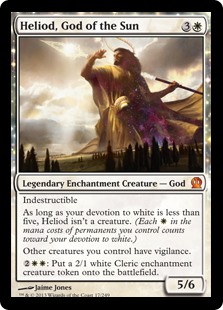
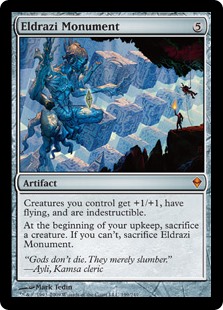
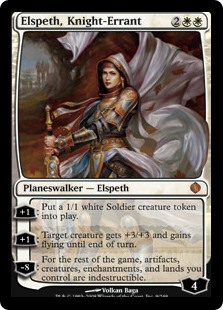
Our opening hands are easy to keep. Any combination of weenies and mana is good enough to open the game, but we need to be aware of our pacing, the speed in which we deploy our creatures (especially the locks), and correctly curving, playing them in the right order (like playing Thorn of AmethystThorn of Amethyst before playing Thalia, Guardian of ThrabenThalia, Guardian of Thraben).
Early game is the time to get some beaters and start pounding people, to make them regret having kept that Explosive VegetationExplosive Vegetation in hand! As satisfying as it is to drop creatures, we also need to develop our mana. After all, if we get too far behind compared to the rest of the table, we will become irrelevant.
In the mid game we need to start to assemble some sort of lock; the tighter the table is locked the safer it will be for us to keep hitting people. While we don't have much of card draw (having card draw engine by this point also goes a long way), Teshar can help smooth it out if one of our creatures ever get removed. Since Teshar is just a value engine, we don't actually need to commit him to the board early. This way we'll have him available when we actually need him, like after a board wipe, for example.
By the late game we need to find our haymakers, such as Eldrazi MonumentEldrazi Monument or True ConvictionTrue Conviction, to be able to connect our attacks. By this point we'll have more creatures in the graveyard than historic spells to trigger Teshar, so it's very important to set our priorities straight. Understanding how the game is flowing and what each deck wants to be doing is crucial for our success.
Epic Results
This is a pretty good starting point, but as the meta gets more specialized we also need to adapt to it. Adding Kataki, War's WageKataki, War's Wage and Leonin Relic-WarderLeonin Relic-Warder help against artifact-heavy metas, Avacyn, Angel of HopeAvacyn, Angel of Hope and Karmic GuideKarmic Guide can help to get through board wipes, and Silverblade PaladinSilverblade Paladin and Mirran CrusaderMirran Crusader are good beaters that we can get back with our commander.
For noncreatures, Aura of SilenceAura of Silence is pretty on-theme with resource denial while hating on artifacts and enchantments. Blind ObedienceBlind Obedience and KismetKismet can also help with tempo.
Planeswalkers are also good inclusions in this list, because we get consistent value out of them. Gideon, Ally of ZendikarGideon, Ally of Zendikar makes dudes, hits like a truck, and also can pump our guys. In other words he's never a dead draw. Elspeth, Sun's ChampionElspeth, Sun's Champion is a snowball on legs. The amount of protection she provides while ticking up towards that ultimate is really annoying (for the other side)! Ajani, Adversary of TyrantsAjani, Adversary of Tyrants is also a good addition; though he's overall worse than Elspeth, Knight-ErrantElspeth, Knight-Errant, his ability to get creatures back is very strong in a deck like this.
Massive land destruction is also worth considering, I know it's a sensitive topic in the EDH community, but when we have some sphere effects on the field and we're ahead on board, the best way to close the game is to sweep the legs. There's always Fall of the ThranFall of the Thran to test the waters (and maybe a Enlightened TutorEnlightened Tutor to go with it).
That’s it for this Epic Experiment! Please fell free to leave any suggestions in the comments section. Do you have any questions about the list? Which cards did you like? Which didn’t you? Was the Epic Experiment a success? Please let me know!
Bernardo Melibeu
Bernardo has been playing(on and off) since portal and somehow manage to survive mirrodin block while being a total casual(beast tribal ftw?). He loves all the shades of blue and being the one saying "nope", while holding a full grip of cards in hand.
Your opinions are welcome. We love hearing what you think about Magic! We ask that you are always respectful when commenting. Please keep in mind how your comments could be interpreted by others. Personal attacks on our writers or other commenters will not be tolerated. Your comments may be removed if your language could be interpreted as aggressive or disrespectful. You may also be banned from writing further comments.
